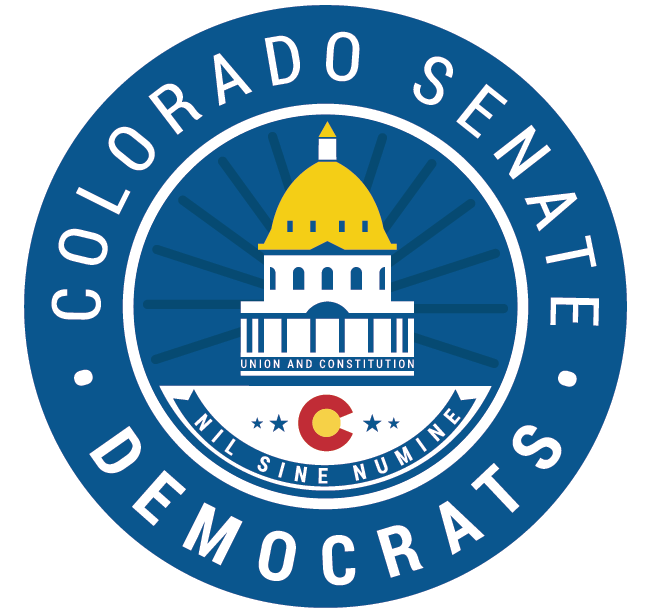Governor Signs Bills that Revitalize Colorado’s Community Solar Program, Modernize Electric Grid
Legislation aims to leverage hundreds of millions of federal dollars from the Inflation Reduction Act and position state to meet climate goals
BOULDER, CO – Today, Governor Jared Polis signed two pieces of legislation that revitalize Colorado’s community solar program, set new standards for equitable clean energy policy, and modernize Colorado’s energy distribution systems.
SB24-207, sponsored by Senate President Steve Fenberg, D-Boulder, and Senator Chris Hansen, D-Denver, as well as Representatives Alex Valdez, D-Denver, and Matt Soper, R-Delta, is a bipartisan law that will put Colorado in a strong position to leverage hundreds of millions of federal dollars from the Inflation Reduction Act to expand access to the clean energy transition, upgrade Colorado’s electric grid, and reduce energy costs.
“Colorado has ambitious goals of rapidly reducing greenhouse gas emissions from transportation, electricity generation, building heating and cooling, water heating, and industrial fuel uses,” said Fenberg. “Our bills remove barriers to renewable energy, so every Coloradan who wants to access clean energy will be able to do so at a cost that won’t break the bank. With unprecedented federal funding opportunities through President Biden’s Inflation Reduction Act, now is the time to revitalize Colorado’s grid and solar programs to meet our climate goals.”
“Colorado is committed to meeting our renewable energy goals, and this new law will make it easier for Coloradans to harness renewable energy power, no matter what their living situation is,” said Valdez. “This is an exciting bipartisan bill that allows Coloradans to utilize solar power even if they don’t have rooftop access of their own, saving them money and helping Colorado transition to green energy.”
“After the major power outages at the beginning of April, it was clear that utilities need to do more to guarantee energy resiliency during extreme weather or natural disasters,” said Hansen. “We need a strong electricity system to make sure we can reduce emissions, lower consumer costs, and improve reliability. A part of this also includes making Colorado’s community solar program more accessible to lower-income individuals and renters. Together, these policies will support our transition to clean energy while saving folks money on their energy bills.”
Community solar projects generate electricity that flows directly to the electricity grid. Community solar subscribers pay for a share of the electricity generated by the project, and then receive bill savings on their electricity bill in the form of a monthly credit. Community solar paired with storage alleviates stress on the grid and avoids costly transmission system upgrades.
Colorado was the first state in the nation to pass community solar legislation - however, only one percent of Xcel’s customers are able to participate in community solar due to the program’s outdated design and limited size.
The law improves the future of community solar in Colorado by:
Requiring investor-owned utilities to continue allowing for the development of community solar projects;
Reserving at least 51 percent of community solar projects for income-qualified residential subscribers;
Delivering income-qualified residential customers a 25 percent bill credit discount, which increases to up to 50 percent with federal tax credits;
Adopting subscriber enrollment methods and consumer protections; and
Giving the Public Utilities Commission discretionary authority to evaluate community solar program requirements in 2028 and beyond.
In order to accomplish Colorado’s goals of reducing greenhouse gas emissions and meet state and federal decarbonization targets, Colorado’s electric grid needs updating. The second law, SB24-218, also sponsored by Fenberg and Hansen, as well as Majority Leader Monica Duran, D-Wheat Ridge, and Representative Kyle Brown, D-Louisville, includes a suite of policy changes to modernize and prepare the electric grid for the future. Improving the distribution system helps communities and utility consumers electrify heating and cooling in buildings, accelerate the deployment of electric vehicle (EV) infrastructure and solar energy, and reduce air pollution.
“Colorado Democrats are making significant progress on environmental protections, and this law helps our state prepare for more electrification,” said Duran. “It’s crucial that we continue our efforts to combat climate change, which is why we passed this law to better expand our capacity to distribute electricity, support our workers, and create jobs.”
“Addressing the threats of climate change is a top priority of mine at the Capitol, and I am proud that our legislation is now Colorado law,” said Brown. “Renewable energy is on the rise, and we have to ensure our infrastructure is up-to-date to accommodate our new energy systems. This new law will boost our economy and modernize our electrical grid to ensure a safe and smooth transition to renewable energy.”
Coloradans have faced delays when installing electric vehicle chargers or rooftop solar, and delays in meeting our larger transportation and building electrification goals will persist if the distribution system isn’t updated.
The law directs investor-owned utilities with more than 500,000 customers (qualified utility) to modernize the electric grid to the benefit of customers and to achieve state energy goals by:
Improving distribution system planning to ensure investments meet transportation and building electrification goals, support distributed energy resources, and prepare for a changing energy marketplace;
Addressing the cost allocation for infrastructure upgrades to avoid one customer paying for the cost of a system upgrade that would support state electrification goals and benefit other customers;
Providing a long-term structure for how utilities will recover costs for distribution system upgrades while maintaining rate stability;
Making workforce investments to provide the skilled workforce required to achieve these infrastructure upgrades;
Clarifying the process and timeline for accommodating beneficial electrification loads and connecting customer-sited distributed energy resources to the qualified utility electrical grid;
Establishing a Virtual Power Plant program that can help save customers money by taking advantage of distributed energy resources; and
Expanding the undergrounding of powerlines and other community benefit investments to avoid the risks of wildfires and power outages during severe weather events.

